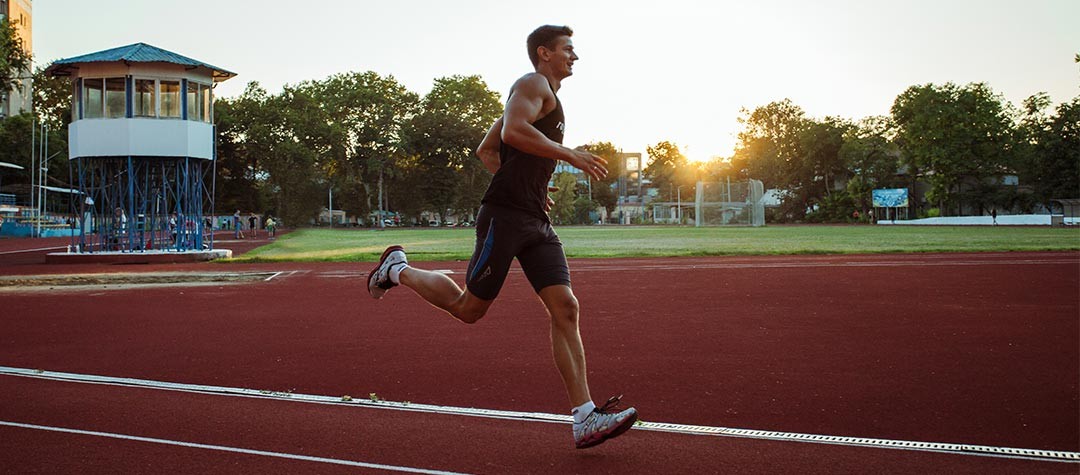Want to know how strides can help you become a better runner and how can you perfect your striding technique? Scott Overall reveals all.
A great way of progressing from steady running to faster times is to incorporate strides into your run. They can be done either at the end of your run or in the middle of the run, but never at the start of the workout.
How to do strides
The idea is that you open up your stride length and learn to run quicker for no more than 100m at a time. The best way to think of doing strides is to view it as controlled sprinting. Now we are not talking running at 100 per cent effort so that you're on your back at the end of it.
The best way to think of doing strides is to view it as controlled sprinting.
Instead you just need to find a middle of the range 60-80 per cent effort. If you are doing them at the end of the run, you need to find a suitable surface, ideally an athletics track, but grass, a flat trail, or even the pavement is good enough as long as you don't need to worry about where you're putting your feet.
Finish your run and just do six to eight intervals of strides with a walk back recovery. The idea is that you should feel better the more you do, with your last one being the fastest yet also feeling the easiest. You might ache a bit on the first couple, but this is quite normal because this is your body telling you that it is too used to running slower, and striding hasn't yet become a regular part of your training.
When to incorporate strides into your workout
If you plan on doing strides in the middle of your run make sure you’ve been running for at least a mile or about 1.5km before attempting them, because it is hugely important that you are warmed up before running quicker.
Before starting your six to eight stride intervals, slow your pace down, and jog into the stride, building up until you hit your 60-80 per cent effort before easing back down to the jog you began with.
In terms of distance it will be difficult to mark out exactly how far you're running, so it might be an idea to count the number of foot strikes. For instance, why not count each time your left foot connects with the ground and stride for 15-20 foot contacts? This means you'll be running roughly the same distance each time.
The reason why you should feel better on the final few strides than you did at the start is because you'll be extending your muscles further and moving up through the gears, running faster . By then you should be comfortable and not straining – remember this isn't a race!
Benefits of strides
Once you’ve incorporated strides into your workout a few times each week you should start noticing a difference in the pace of your steady runs. In fact you might be able to start out a bit quicker than you had previously without any extra effort. You just need to condition the legs to run faster and the more strides you do, the better you will become at gauging pace.
Strides can also be used as part of a warm up routine for a race, as well as a training session. I don’t think static stretching is really a good idea before racing or training and I personally would do more dynamic exercises and then strides before a race than stretching. Once you have got the hang of that you can start to develop more serious training programmes into your running week.















